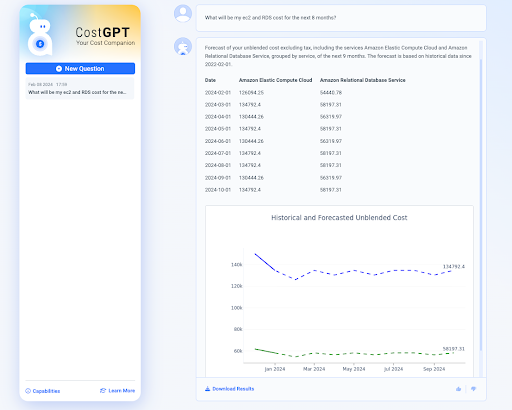Using AI to solve complex FinOps challenges
According to the 2024 State of FinOps Report, enabling automation now ranks among the top three increased priorities. Enterprises can automate their FinOps processes, better understand their cloud spending, and improve their cloud efficiency by integrating AI into their FinOps practices.
Advances in artificial intelligence, such as generative AI, enable FinOps practitioners tackle complex FinOps challenges—such as advanced forecasting, optimization recommendations, complex pricing models, hidden costs, and inadequate cost monitoring and reporting—and answer deeper and broader cloud cost questions using a simple natural-language chat interface.
With AI, enterprises can use the cloud more effectively and predictably, allowing engineers to experiment and innovate, resulting in better business outcomes.
What role does AI play in your FinOps strategy?
Ask yourself these questions to find out:
- Has AI changed your FinOps practice? How is it used in the inform, optimize, and operate FinOps phases?
- How do your tools forecast costs, detect anomalies, and suggest waste reduction optimizations? Do they use rules, statistical analysis or machine learning? How are results scored and prioritized?
- Is Generative AI used to automate FinOps tasks and solve complex FinOps challenges?
- Are your anomaly alerts relevant and timely? What is your signal-to-noise ratio? How often do you experience false positives and false negatives?
- How long does it take to determine the root cause and implement a response for cloud cost anomalies?
- Do you have the ability to generate accurate forecasts at multiple levels of granularity (e.g., daily, weekly, monthly, quarterly, and yearly)? What is the variance between your forecasts and actual costs?




